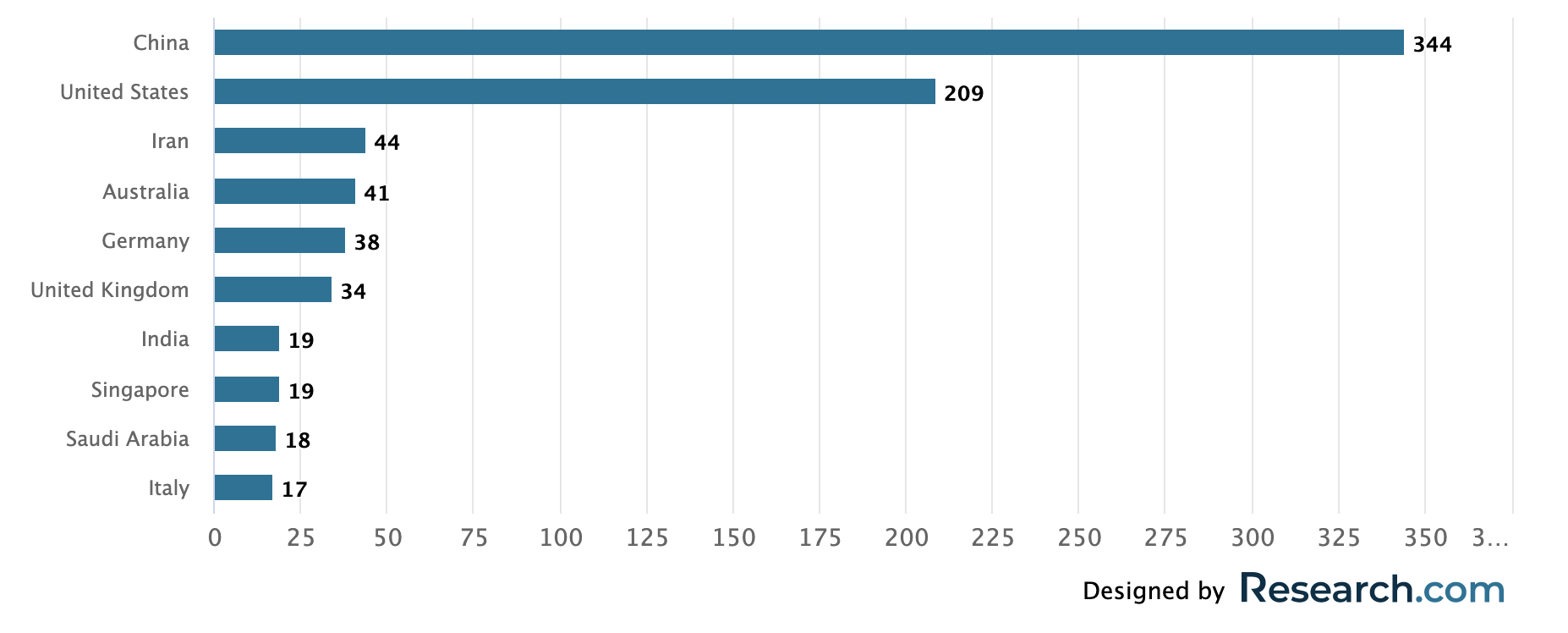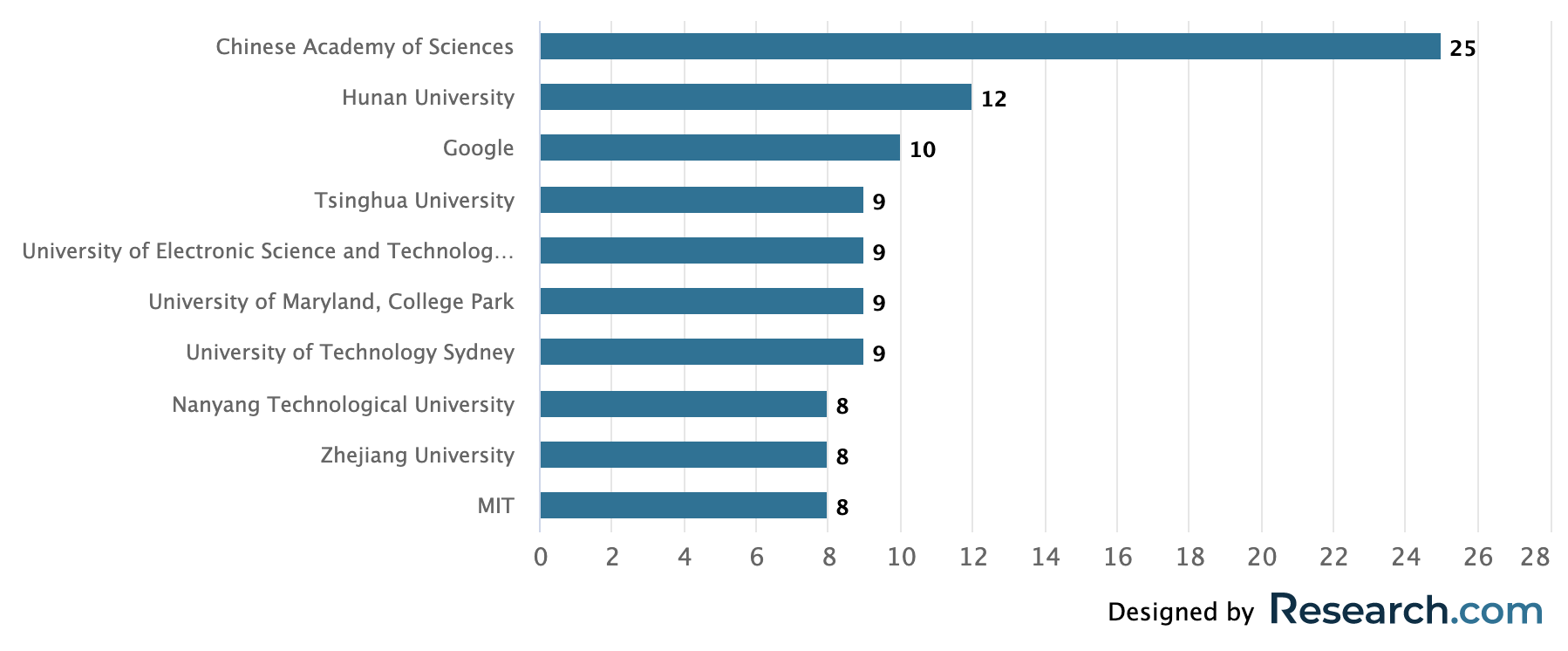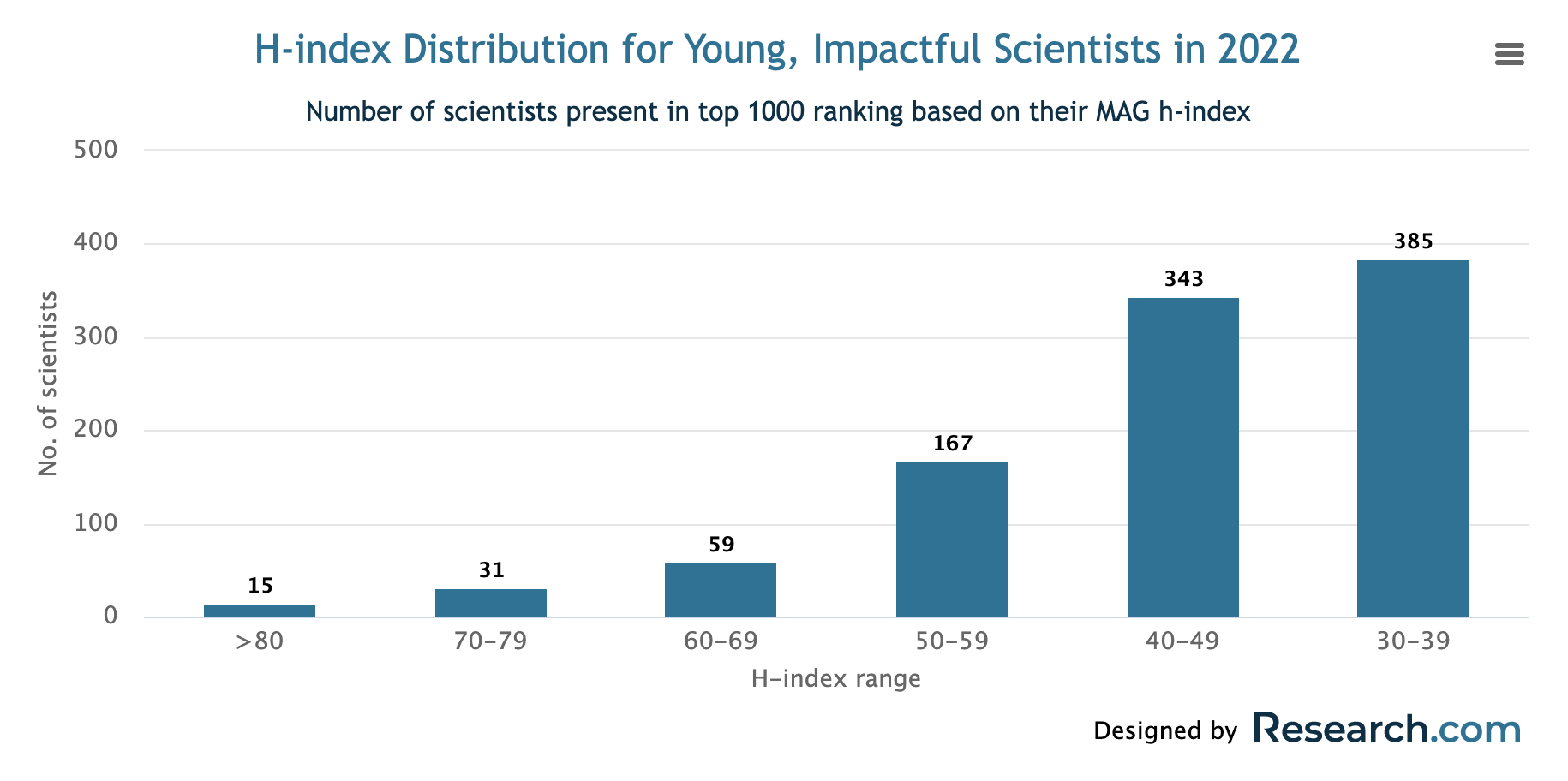Rising Stars of Science World Ranking 2022 (1st Edition)

![]()
![]()
Chief Data Scientist & Head of Content
On November 8, 2022, Research.com released the 1st edition of the annual world ranking of the rising stars of science. This list of the world’s young and impactful scholars is designed to offer the academic community more visibility and exposure to the influential research contributions made by those at the forefront of science.
The goal of the ranking is to inspire scholars, and those considering an academic career, with the example of young, successful researchers who are just starting their academic career and have already made a huge impact with their work.
For the 2022 edition of the ranking, more than 166,880 scientist profiles on Google Scholar and Microsoft Academic Graph have been examined with several indicators and metrics reviewed in order to consider each scientist’s inclusion in the ranking.
The h-index threshold for approving a scholar to be considered was set differently for each scientific discipline but was in most cases equal to 30 or 40. The inclusion criteria for scholars to be considered for the ranking of top scientists are based on their h-index, the proportion of contributions made within the given discipline, and the awards and achievements of the scientists. Only scientists who published their first paper less than 13 years ago were considered.
The key findings from the rising stars of science ranking
- The highest-ranking rising star of science is Mohsen Sheikholeslami from Babol Noshirvani University of Technology, Iran, with an h-index of 126.
- 4 out of 10 best scientists on the list work in China, while only 2 of them work in the USA.
- Scientists working in China dominate the list with 344 scholars included in 2022 which represents 34.4% of the whole rising stars of science ranking.
- The other leading countries with leading positions in the ranking are the USA (209 scientists or 20.9%), and Iran (44 scientists or 4.4%).
- In the 2022 edition of our ranking, the Chinese Academy of Sciences is the leader, with 25 scientists affiliated with that institution included in the ranking.
- The highest cited scientist is Gregory A. Roth from the University of Washington with 142,304 citations.
- The average H-index for the top 1% of scientists is 93 against an average of 45 for the top 1000 scientists included in the ranking.
The full ranking for the 2022 list of the world’s rising stars of science can be found here:
RISING STARS OF SCIENCE RANKING
Countries with the highest number of scientific rising stars
China has the highest number of scientific rising stars in our ranking, with 344 (34.4%) scholars listed. This shows a growing trend of the new generation of researchers from China making more significant contributions to global research. 4 out of 10 best scientists in the ranking are also affiliated with Chinese institutions.
The United States ranks second, with 209 scientists listed. Only 2 out of 10 best researchers are working in the USA though.
The third spot was taken by Iran, which currently has 44 ranking scientists.
The other leading countries are Australia with 41 scientists, Germany with 38 scientists, the UK with 34 scientists, India with 19 scientists, and Singapore with 19 scholars as well.
Please note that the country associated with a scientist is based on their affiliated research institution according to MAG, not on their actual nationality.
No. of young, impactful scientists per country in 2022
Based on the top 1000 scientists using MAG h-index dataDesigned by


Institutions with the highest number of scientific rising stars
In the 2022 edition of our ranking, the Chinese Academy of Sciences is the unquestionable leader, with 25 scientists affiliated with that institution included in the ranking. Ranking second is Hunan University, China with 12 scientists, and third place is occupied by Google with 10 scholars.
Chinese universities and institutions constitute 50% of the top 10 leading institutions with only 30% of them being located in the US. The other two leading institutions are based in Singapore and Australia (University of Technology Sydney and Nanyang Technological University).25251212101099999999888888Chinese Academy of SciencesHunan UniversityGoogleTsinghua UniversityUniversity of Electronic Science and Technolog…University of Maryland, College ParkUniversity of Technology SydneyNanyang Technological UniversityZhejiang UniversityMIT0246810121416182022242628
Institutions with the most young, impactful scientists in 2022
Based on the no. of scientists with the highest MAG h-index


H-index ranking – leaders, averages, and distribution
For Asia, Professor Mohsen Sheikholeslami from the Babol Noshirvani University of Technology, Iran is ranked first in the region, with an H-index of 126. He’s also listed as no. 1 in the world ranking.
For North America, Professor Matthew D. Hellmann from Memorial Sloan Kettering Cancer Center, United States is on top of the list with a world ranking of no. 2 as well. His h-index is 97.
Professor Giovanni Benelli from the University of Pisa, Italy leads the top list in Europe with a world ranking of 8 as well. His h-index is 85.
Professor K. Kaviyarasu from iThemba LABS, South Africa ranks as the first scientist in Africa, with a world ranking of 18.
For Oceania, Professor Alexander M. Menzies from the University of Sydney, Australia ranks 1st on our list of leading scientists in that region. He’s also listed as no. 41 in the world ranking.
Professor José C. S. dos Santos from Universidade Federal do Ceará, Brazil is the highest-ranking scientist from South America with a world ranking of 230.
The average H-index for the top 1% of scientists is 93 against an average of 45 for the top 1000 scientists included in the ranking.
The scholar with the lowest index value who made it to the ranking in 2022 has an H-index of 32.
The average number of published articles for the top 1% of scientists in the ranking is 346 against an average of 148 for the top 1000 scholars.
The average number of citations for the top 1% of scientists is 45,599 against an average of 10,138 for the top 1000 scholars. The highest cited scientist is Gregory A. Roth from the University of Washington with 142,304 citations.


H-index Distribution for Young, Impactful Scientists in 2022
Number of scientists present in top 1000 ranking based on their MAG h-indexDesigned by
You can learn more about the methodology used to create the ranking here.
About Research.com
All research was coordinated by Imed Bouchrika, PhD, a computer scientist with a well-established record of collaboration on a number of international research projects with different partners from the academic community. His role was to make sure all data remained unbiased, accurate, and up-to-date.
Research.com is the number one research portal for science rankings. Our mission is to make it easier for professors, research fellows, and those studying for a PhD or a master’s degree to progress with their research and to ensure they are always up-to-date with the latest conferences around the world and publications related to their work. Research.com is also involved in the publication of an annual ranking of leading scientists in a wide range of scientific disciplines.





